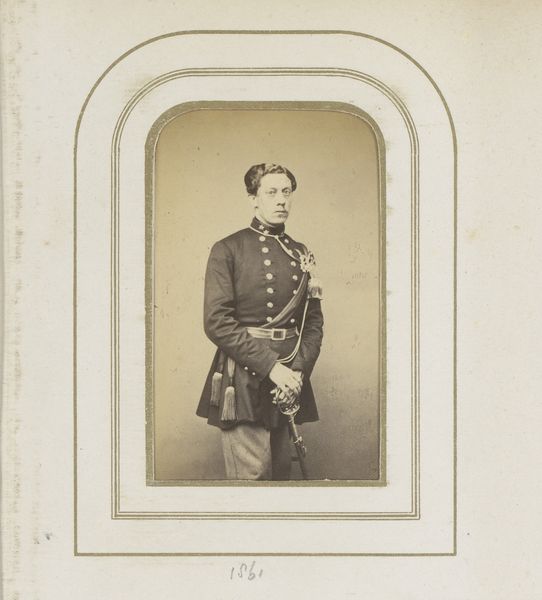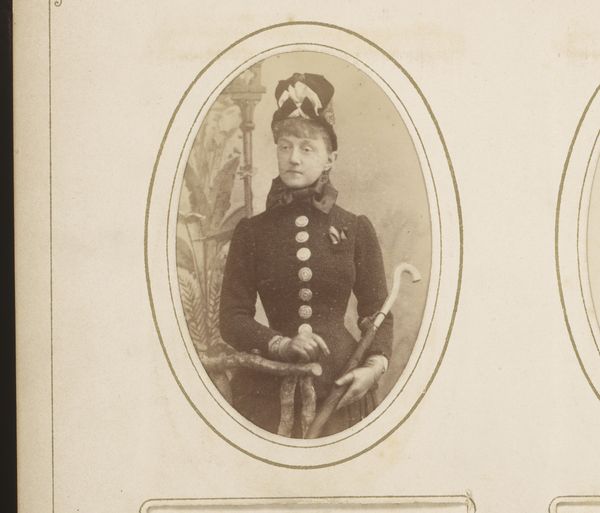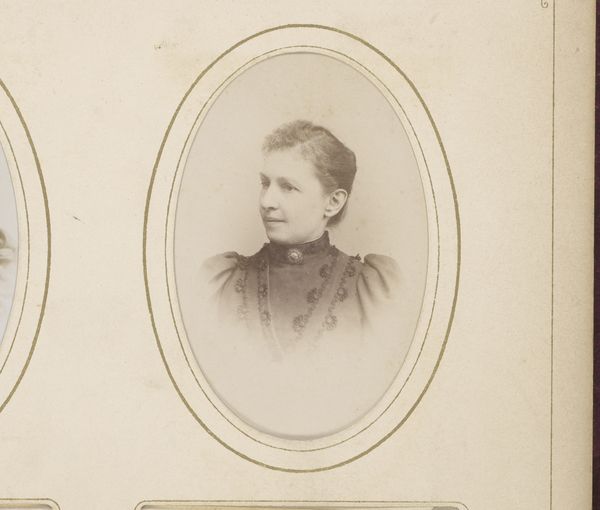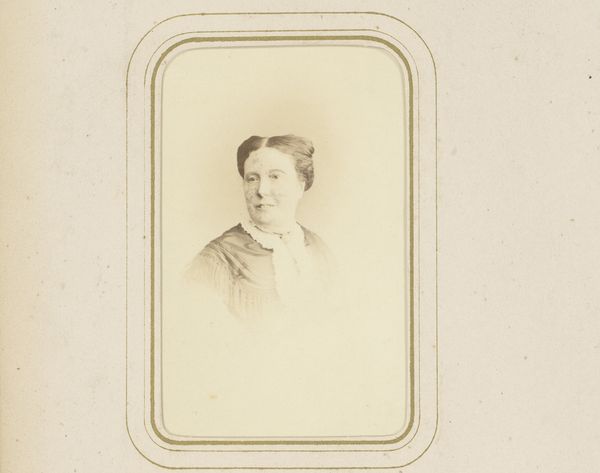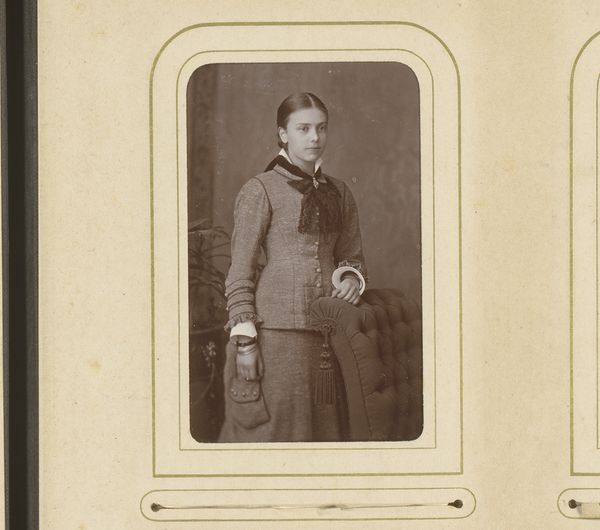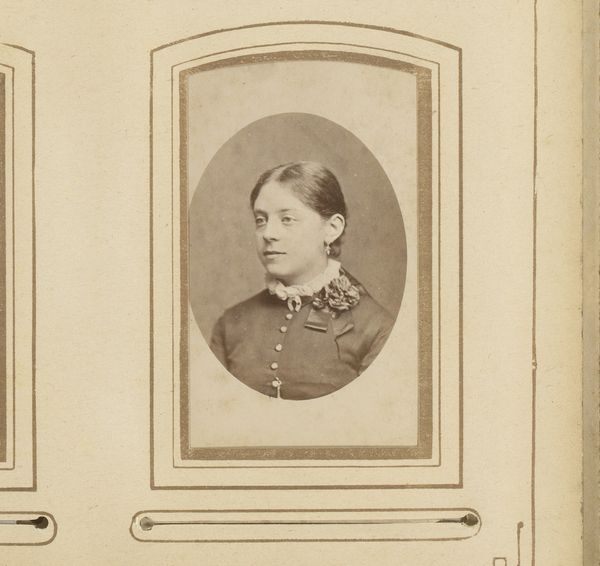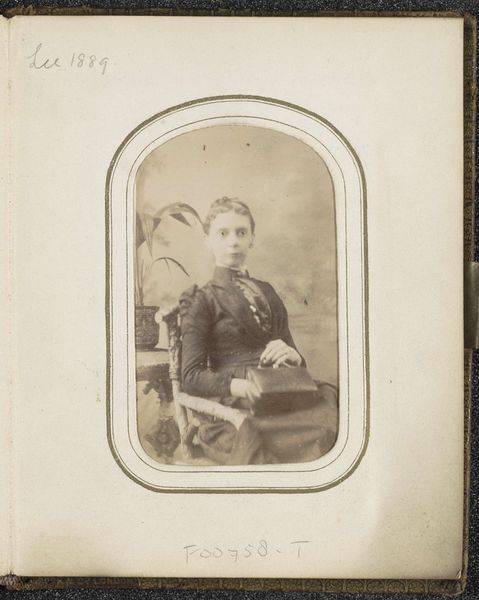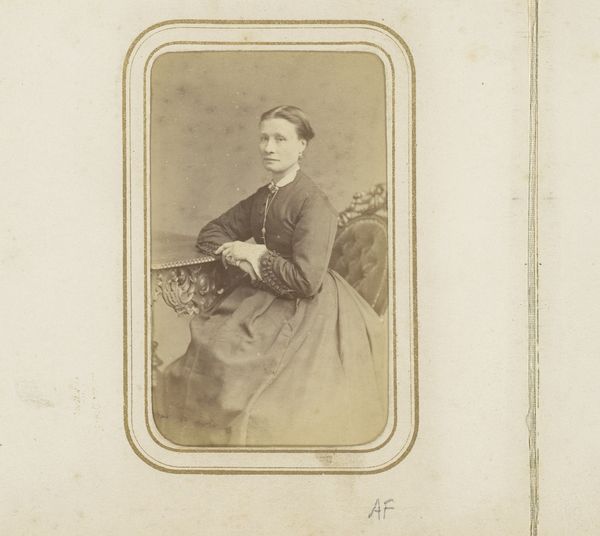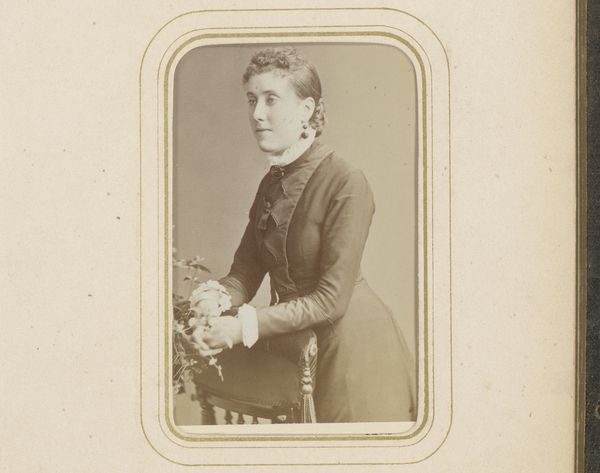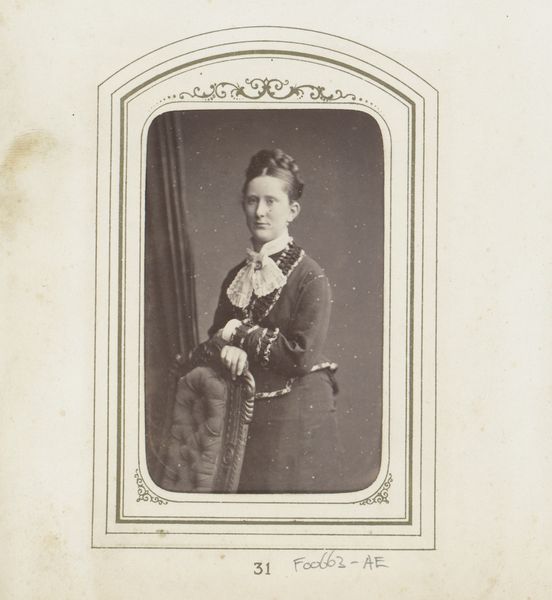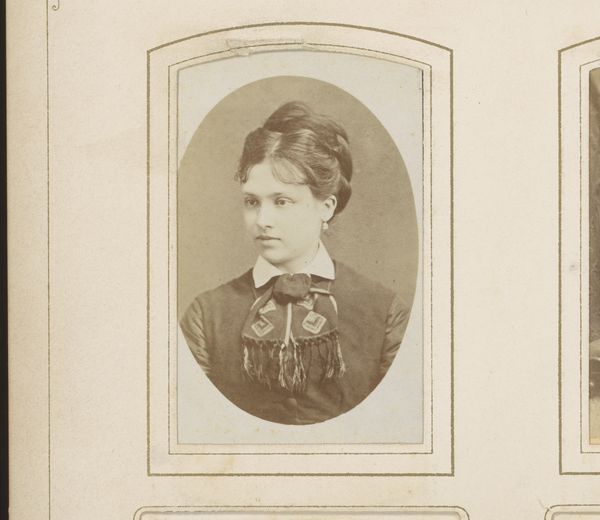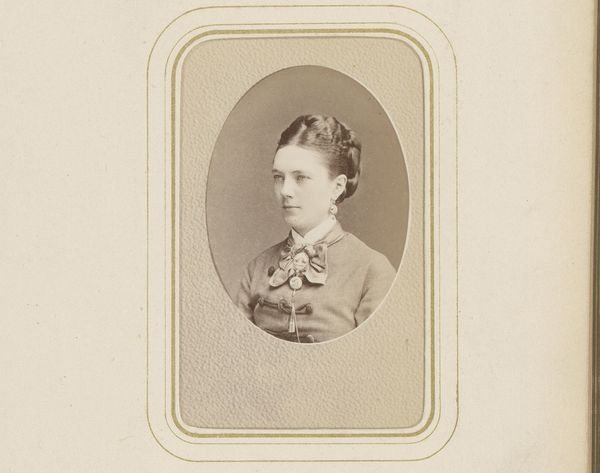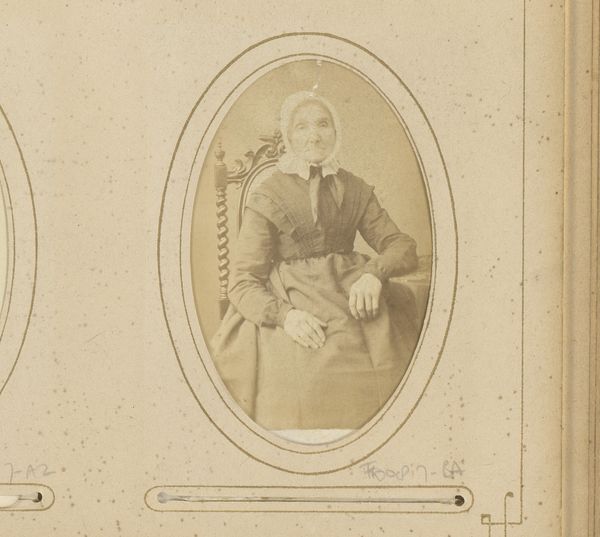
Dimensions: height 86 mm, width 53 mm
Copyright: Rijks Museum: Open Domain
Curator: Immediately, I see melancholic composure, a bit severe. Almost feels like a shadow box of repressed emotion. Editor: We're looking at "Portret van een man in uniform," made sometime between 1850 and 1890 by Eugène Hallier. The photographic medium used here is fascinating. The detail captured in the gelatin-silver print! Remarkable for that era. Think of the chemical processes involved in creating such an image at the time. Curator: It's true; the craftsmanship speaks to a moment when photography was really solidifying its claim as fine art. Yet, he seems…contained by that oval frame, and within the stiff collar and rows of buttons. He clutches something, a letter maybe, that adds another layer of…secrecy, I guess. Editor: I think you hit on something vital: this photograph represents an interesting dialogue between the democratization of portraiture, enabled by new technologies, and the performance of social identity. This man clearly wants to project a specific image through his attire. What can the uniform reveal about the sitter’s profession? What social expectations did it place on the wearers of uniforms during the mid to late 19th century? Curator: True. Those rows of shiny buttons could have been polished until gleaming only moments before, as an expectation. But it's the very slight droop of his mouth that I keep returning to. It belies that outer strength, a hint of vulnerability he couldn’t quite hide from Hallier’s lens. Makes me wonder about his life, really. Editor: Right. The convergence of aesthetic intentions and social expectations through Hallier’s access to photographical material becomes compelling. These images aren't merely representations; they are active agents in constructing historical narratives of 19th-century figures. Curator: I like how it humanizes the historical record for me, bringing an emotional weight to what might otherwise feel like distant facts. Editor: Indeed, these artifacts serve not only as objects for detached examination, but are portals through which we engage with our history.
Comments
No comments
Be the first to comment and join the conversation on the ultimate creative platform.
